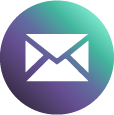- Home
- /
- Articles & Helpful Resources
- /
- Articles – Comparative Evaluation...
Peer-reviewed article shows some sterilizer technologies are more effective than others.
In a first-of-its-kind, peer-reviewed journal article titled Comparative Evaluation of the Microbicidal Activity of Low-Temperature Sterilization Technologies to Steam Sterilization1, William A. Rutala, PhD, detailed comparative testing they performed on different sterilization modalities under simulated inadequate cleaning conditions to understand differences in sterilizer efficacy and the critical nature of proper cleaning when reprocessing medical devices.
In this study the research team compared heat-based steam sterilization to low-temperature sterilization (LTS) technologies, including:
- Ethylene oxide gas sterilization (ETO)
- Hydrogen Peroxide Gas Plasma (HPGP)
- Vaporized hydrogen peroxide (VHP)
Given the prevalence of HPGP and VHP sterilization technologies for low-temperature sterilization where material compatibility necessitates alternatives to steam sterilization, we find the results of this study remarkable.
Steam, ETO, and HPGP sterilization techniques were capable of inactivating the test organisms on stainless steel carriers with a failure rate of 0% (0 of 220), 1.9% (6 of 310), and 1.9% (5 of 270), respectively. The failure rate for VHP was 76.3% (206 of 270).1
According to the article for comparing the largest margin of safety as it relates to microbicidal failure rate, researchers found “no significant difference comparing the failure rate of steam to either ETO (P>.05) or HPGP (P>.05)”1 while “the failure rate of VHP was significantly higher than the other technologies evaluated for both vegetative bacteria (P < .00001) and spores (P < .00001).”1

The importance of this significant difference in failure rates between HPGP technology, used exclusively in ASP STERRAD® Systems and VHP technology (in this study, a Steris® V-PRO® maX) is noteworthy.
“The VHP system failed to inactivate all the test organisms in 76.3% of the tests…” “On vegetative bacteria (P. aeruginosa, E. coli, VRE, S. aureus, and M. terrae), VHP had a failure rate of 71.7% (129 of 180), and with the spores (B. atropheaus spores, G. stearothemophlus spores, and C. difficile spores), VHP had a failure rate of 85.6% (77 of 90). The failure rate of VHP was significantly higher than the other technologies evaluated for both vegetative bacteria (P<.00001) and spores (P < .00001).”1
These results show VHP having a “significantly narrower margin of safety in killing vegetative bacteria and spores in the presence of a salt and serum challenge.”
References
- Rutala et al., Comparative evaluation of the microbicidal activity of low-temperature sterilization technologies to steam sterilization, Infection Control and Hospital Epidemiology (2020), 1-5 Research funded by ASP
- The research was designed and executed by Actionable Research, an independent third-party research firm in conjunction with ChemDAQ® Inc., a manufacturer of environmental safety monitoring systems. The research sponsor was Advanced Sterilization Products. All data were collected by the ChemDAQ® staff.
